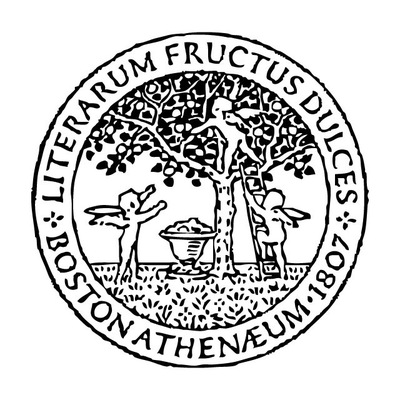
Description
Welcome to the Boston Athenaeum. I'm Elizabeth Barker, Stanford Calderwood Director, and I'm delighted to introduce you to our special historic institution. As you may know, the first floor of the Athenaeum is open to the public and the upper floors are reserved for the use of our members. If you are not yet a member, but are interested in becoming one, I encourage you to visit the Membership Office located here on the first floor. There you'll find additional information about our large collection of circulating books, dozens of lectures, concerts, book talks, discussion groups, and exhibition openings each year. You'll find the office to the right of the room with the large sculpture of George Washington. By the way, further down that same hallway you'll find our Children's Library and the necessity of the restrooms.
The Boston Athenaeum is one of America's oldest cultural institutions. Founded in 1807 as a place to promote knowledge, it was named in part for Athena, the Greek goddess of wisdom. Its purpose today is to encourage curious people to discover the humanities: the fine arts, history, and literature. We accomplish this through our ever-growing collections of books, paintings, sculptures, prints, photographs, maps, manuscripts, and periodicals. As the Athenaeum has grown and expanded across the decades, it originally moved several times. Finally, in 1849 the Athenaeum purchased property on Beacon Street and commissioned a local architect to design and build a structure that would meet the library's specific needs. That is the building in which you are now standing.
Originally, the Athenaeum had three main floors, each of which looked more or less like the one on which you are now standing. As the Athenaeum continued to grow, the building was expanded, improved, renovated, and restored several times, including by the addition of two more floors above, while retaining the basic floor plan and many of the original architectural features inside and out. Today the Boston Athenaeum contains some of the grandest spaces in New England, spaces filled with treasures of art and culture, making our institution the proper place for the pursuit of knowledge, and also a place of refinement and beauty. Take for example the impressive life-sized statue of George Washington. If you don't see it, please ask one of our friendly employees for directions. It stands in the room with the distinctive curve, or bow, at one end where large windows overlook the old Granary Burying Ground. Have you found it? If not, please feel free to pause this recording while you find it.
This statue is an exact copy--the first ever made--of one of the earliest public commemorative sculptures erected in this country. The original, made of marble, was commissioned from a leading French sculptor, Jean-Antoine Houdon, by the Commonwealth of Virginia in the 1790s with the intention of placing it in the rotunda of the state capitol building in Richmond, Virginia. Indeed, that marble is still there today. During the 1840s the Boston Athenaeum acquired the surviving part of George Washington's personal library and at almost exactly the same time, received permission from the Virginia state government to have this copy of the statue made. Here Washington is shown as the citizen soldier he was--a gentleman farmer who has done his duty for his country and then returned to civilian life. He still has his sword at his side, but he also holds the walking stick and stands before a plow. If you carefully move to the side of the sculpture, without touching it if you please, you can see these features quite clearly. The objects symbolized Washington's own attitude toward the new American system of government and his role within it, a democracy to be ruled by the people, not by a monarch, and one in which every citizen could and should participate, while maintaining individuality and dignity--an elusive goal, of course, but a worthy one nonetheless. The statue of George Washington, life sized, full length, dramatically elevated on its pedestal is impressive. As such it fulfills its purpose as a work of art; it teaches and inspires us as we contemplate the honorable nature of a great American and recall his historic deeds and the sacrifices he made for his country.